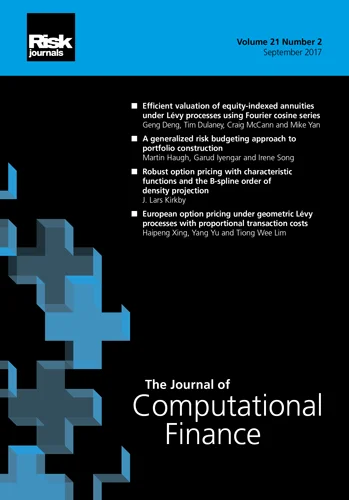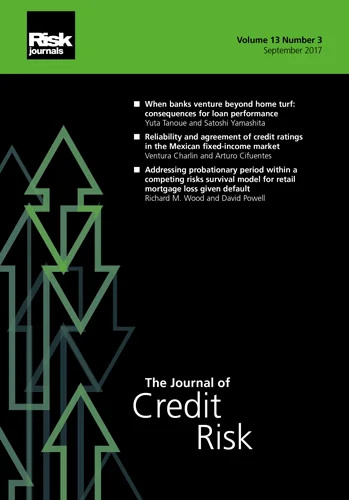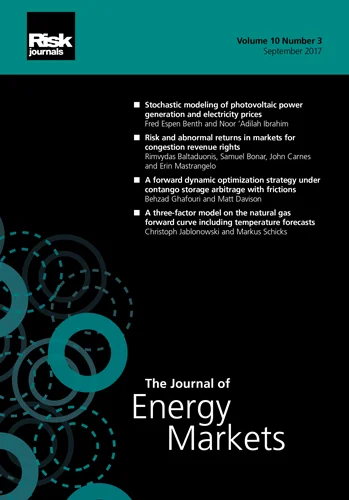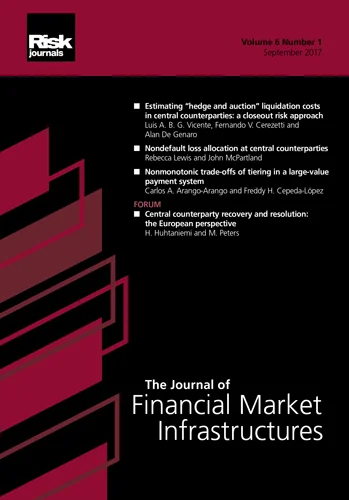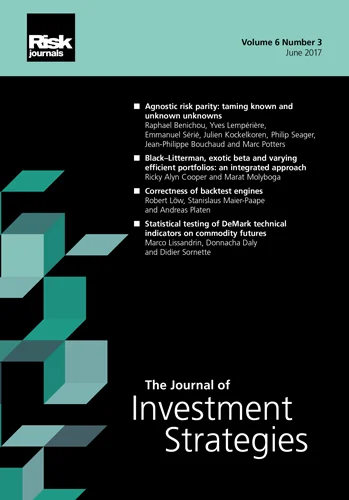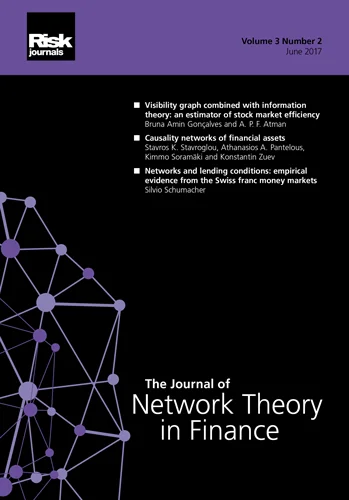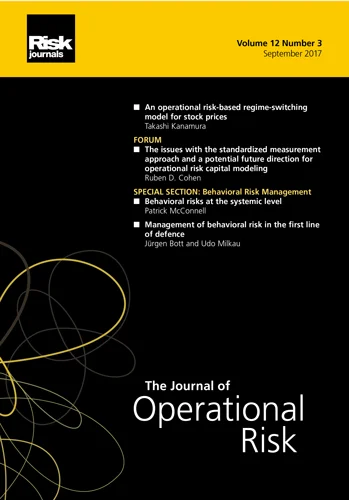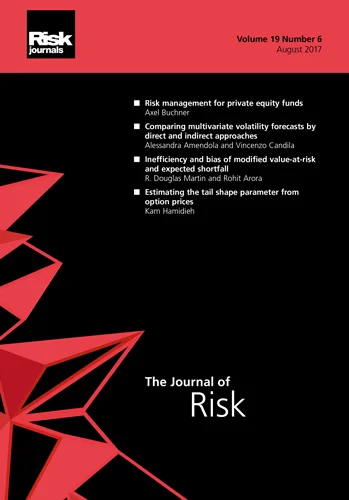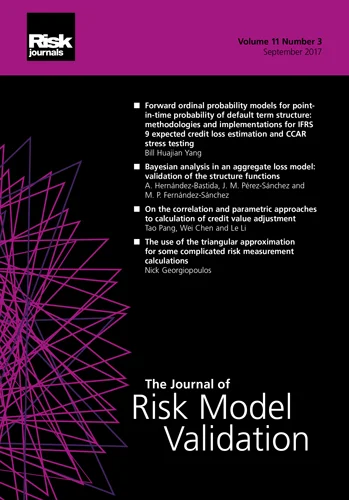Journal of Computational Finance
ISSN:
1460-1559 (print)
1755-2850 (online)
Editor-in-chief: Christoph Reisinger
About this journal
The Journal of Computational Finance is an international peer-reviewed journal dedicated to advancing knowledge in the area of financial mathematics. The journal is focused on the measurement, management and analysis of financial risk, and provides detailed insight into numerical and computational techniques in the pricing, hedging and risk management of financial instruments.
The journal welcomes papers dealing with innovative computational techniques in the following areas:
- Numerical solutions of pricing equations: finite differences, finite elements, and spectral techniques in one and multiple dimensions.
- Simulation approaches in pricing and risk management: advances in Monte Carlo and quasi-Monte Carlo methodologies; new strategies for market factors simulation.
- Optimization techniques in hedging and risk management.
- Fundamental numerical analysis relevant to finance: effect of boundary treatments on accuracy; new discretization of time-series analysis.
- Developments in free-boundary problems in finance: alternative ways and numerical implications in American option pricing.
Abstracting and Indexing: Scopus; Web of Science - Social Science Index; MathSciNet; EconLit; Econbiz; and Cabell’s Directory
Journal Metrics:
Journal Impact Factor: 1.417
5-Year Impact Factor: 1.222
CiteScore: 1.4
Latest papers
Pricing high-dimensional Bermudan options using deep learning and higher-order weak approximation
The authors propose a deep-learning-based algorithm for high-dimensional Bermudan option pricing with the novel feature of discretizing the interval between early-exercise dates using a higher-order weak approximation of stochastic differential equations.
Clustering market regimes using the Wasserstein distance
The authors apply Wasserstein distance and barycenter to the k-means clustering algorithm, validating their proposed method both qualitatively and quantitatively.
An iterative copula method for probability density estimation
This paper puts forward a technique with which to reconstruct a probability density function from an n-dimensional probability distribution sample and provide a theoretical justification for the proposed method.
A multidimensional transform for pricing American options under stochastic volatility models
The authors put forward a transform-based method for pricing American options which is computationally efficient and accurate under under low-dimensional stochastic volatility models.
A simple local correlation model
This paper puts forward a novel kind of "local-in-index" model which allows easier computation of Greeks.
An equity-implied rating model for unrated firms
The authors use Merton's distance to default as the basis for new model with which to assign credit ratings to firms which are not traditionally rated.
Evaluating credit valuation adjustment with wrong-way risk for Bermudan options
The authors propose a method for credit valuation adjustment evaluation that avoids the need for simulation while maintaining efficiency and accuracy.
Optimal damping with a hierarchical adaptive quadrature for efficient Fourier pricing of multi-asset options in Lévy models
The authors put forward a method for pricing European multi-asset options intended to address challenges related to the choice of damping parameters and the treatment of high dimensionality when designing methods for Fourier pricing options.
Extremiles, quantiles and expectiles in the tails
The author investigates quantiles, expectiles and extremiles in tail estimators for linear regression.
Neural variance reduction for stochastic differential equations
This paper proposes the use of neural stochastic differential equations as a means to learn approximately optimal control variates, reducing variance as trajectories of the SDEs are simulated.
Hedging of financial derivative contracts via Monte Carlo tree search
This paper applies the Monte Carlo tree search as a method for replication in the presence of risk and market friction
Refined analysis of the no-butterfly-arbitrage domain for SSVI slices
The authors investigate the surface SVI model with three with three parameters, applying the SVI results to give the nobutterfly- arbitrage domain
Automatic adjoint differentiation for special functions involving expectations
The authors put forward AAD algorithms for functions involving expectations and use their technique to calibrate European options.
Neural stochastic differential equations for conditional time series generation using the Signature-Wasserstein-1 metric
Using conditional neural stochastic differential equations, the authors propose a means to improve the efficiency of generative adversarial networks and test their model against other classical approaches.
Toward a unified implementation of regression Monte Carlo algorithms
The authors put forward a publicly available computational template for machine learning, named mlOSP, which presents a unified numerical implementation of RMC approaches for optimal stopping.
A general control variate method for time-changed Lévy processes: an application to options pricing
The authors put forward a novel control variate method for time-changed Lévy models and demonstrate an efficient reduction of the variance of Monte Carlo in numerical experiments.
Modeling the bid and ask prices of options
The authors investigate and partially solve theoretical and empirical problems for the joint modelling of bid and ask prices.
Efficient numerical valuation of European options under the two-asset Kou jump-diffusion model
The authors extend a technique proposed by Toivanen (2008), arriving at an algorithm evaluating the nonlocal double integral appearing in the two-dimensional Kou PIDE and perform several numerical experiments to demonstrate actual convergence behavior…
Sharp L¹-approximation of the log-Heston stochastic differential equation by Euler-type methods
The authors employ Euler-type methods to study the L¹ approximation of the log-Heston stochastic differential equation at equidistant time points.
An optimal control strategy for execution of large stock orders using long short-term memory networks
Using a general power law in the Almgren and Chriss model and real data, the authors simulate the execution of a large stock order with an appropriately trained LSTM network.
